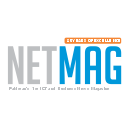For many employees, the coronavirus pandemic presented an opportunity thereby which they could escape from the prying eyes of upper management. Indeed this ordeal presented itself as employees no longer had to deal with pressures such as acting busy when their boss walked by, or indeed the pressures of not being caught while logging on to social media to check the latest on the pages that they have liked or follow. However, contrary to what might have been thought of in the past, it is in fact the case that despite the physical distance in place, businesses happen to be keeping closer tabs on their employees more than ever before.
Indeed the usage of performance monitoring tools has skyrocketed over the course of the past few months as managers try to improve team visibility and also look towards the prospect of tracking output. In fact, even before the crisis came into play, 62% of organizations actually were making use of monitoring tools so as to collect data on employees’ behavior during the work hours.
As we approach a whole year of remote work, these tools have seemingly become integral to how a company runs on a day-to-day. And while a return to office physically is also fast approaching us, it is highly unlikely that managers would roll back software that has contributed so much – especially in the case of providing insight.
Nonetheless, while the benefits of keeping tabs on employees are without doubt many, there does exist a fine line between surveillance and management, and there is an even finer line that exists between legitimate reasons to monitor staff and an illegal intrusion over one’s privacy. Businesses do need to be vary of the fact that the tracking of solutions that they end up making the use of are in the course of being legal, ethical, and don’t end up damaging the relations that exist with team members. All in all, here’s how managers can actually support the usage of performance monitoring tools and not spy on their respective employees :
Sophisticated tools might not always be the solution
While physical time cards and other methods were employed in the past so as to make sure that the employees were working all the time that they should have been, all such methods are now digitized. However, such tech also brings about some amount of uncertainty as to how recorded data happens to be used or stored. Part of the problem here is the fact that software can actually be activated without the permission or knowledge of users.
Have knowledge of the legal boundaries
While employers in some countries are entitled to monitor internet activity, social media, screen content and also keystrokes, this isn’t of course the case for every country. Privacy regulations of course depend on what part of the world we’re talking about.
Also Read: What jobs are likely to be obsolete in the near future?
Nonetheless, in countries where the laws are a bit strict, companies are often required to explain as to why they are collecting data on employee activity as well as accept the burdens of data protection. It is therefore absolutely essential that those employers who are looking to make use of such tools are aware of all the laws that are in place in whatever country that they are operating in.
An erosion of trust?
Trust that exists between individuals and their employers could be very fragile even at the best of times, let alone when these individuals are working from a distance. Indeed while on one hand suddenly thrusting performance monitoring tools on people could end up being seen as an attempt to micromanage, not telling people at all that such tools have been implemented could go on to eradicate trust altogether.
And so, it has to be said that if indeed performance monitoring practices aren’t subject to being applied in a proper manner, they can end up increasing the stress as well as anxiety with which employees approach their jobs and their day to day tasks. Such situations could also end up making individuals and teams feel as if they don’t possess the autonomy of managing how and when they work – which ends up leading to lowering morale and ultimately – productivity.
And so, it is rather important that before any software ends up being deployed, managers should spend time with the tool and hence learning which metrics are tracked. Once these managers are familiarized, then they should notify employees as to exactly how these tools work, how the data with which their working principle is carried out on is collected, and exactly why they’re being introduced in the very first place. In this regard, a Q&A session might end up being seen as a rather healthy activity in order to walk teams through the tools and also address any claims. The onboarding stage is especially very critical in order to maintain trust, and so it can be seen as a good activity.
Where do employers stand?
All in all though, as mentioned above, it is indeed very important for employers to understand where they stand and for them to acknowledge the gravity of the situation which presents itself.
Indeed the whole ordeal is rather sensitive, as can perhaps be noted as a result of all the matters which have been noted above. While the tools that are applicable do indeed end up yielding quite the results, understating how they work, and more importantly, making sure that employees know how they work and why they’re there in the first place is perhaps an even more important task.




